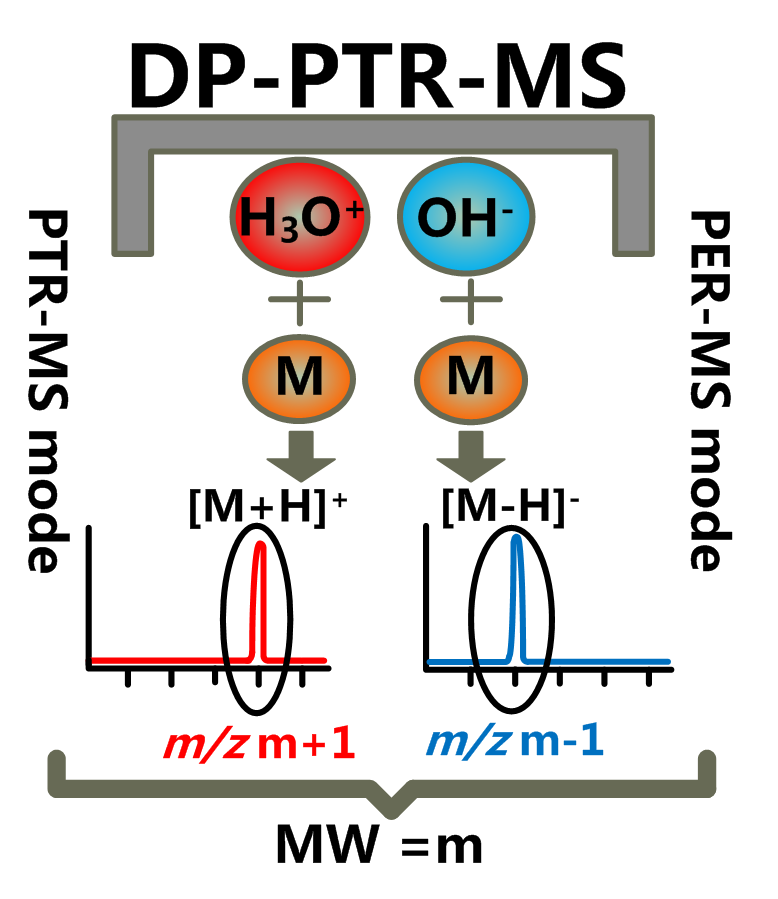
Lately, SHEN Chengyin and his co-workers, at the Laboratory of Medical Optical and Mass Spectrometry, Center of Medical Physics and Technology, Hefei Institutes of Physical Science, Chinese Academy of Sciences, developed a new technology called dipolar proton transfer reaction mass spectrometry (DP-PTR-MS) to improve identification of organic compounds through the combined detection based on positive and negative ions.
For a long time, the high level online mass spectrometry technology, which is represented by proton transfer reaction mass spectrometry (PTR-MS), plays an important role in many fields such as environmental protection, biology, healthcare, public safety and so on.
It provides a highly sensitive technology for the fast and quantitive detection of volatile organic compounds (VOCs). The principle of PTR-MS is to convert VOCs into [VOCs+H]+ by the proton transfer reaction between H3O+ and the VOCs, so as to realize the ionization of the VOCs and the subsequent mass spectrometric detection.
Since the positive reagent ions H3O+ in the PTR-MS hardly react with the inorganic compounds, the team proposed proton extraction reaction mass spectrometry (PER-MS). PER-MS achieved the simultaneous detection of organic and inorganic compounds by preparing negative reagent ions OH-.
Recently, the team developed a novel technology called dipolar proton transfer reaction mass spectrometry (DP-PTR-MS) with switchable PTR-MS and PER-MS operating modes.
DP-PTR-MS improved the ability to identify organic compounds through the cooperative detection based on positive and negative ions.
Ketone (denoted by M) was tested as an example, was ionized as positive ion [M+H]+ (mass-to-charge ratio (m/z) m+1) in the PTR-MS mode and negative ion [M-H]- (m/z m-1) in the PER-MS mode.
By comparing the m/z value of the positive and negative ions in the two modes, the molecular weight of the ketone can be certainly identified as m.
The newly developed DP-PTR-MS can not only detect organic and inorganic compounds, but also supply more powerful analytical ability to identify VOCs.
This work was detailed on the authoritative magazine Journal of the American Society for Mass Spectrometry with the title of "Detection of ketones by a novel technology: dipolar proton transfer reaction mass spectrometry".
This new method and technology had been applied for invention patent, and this work was supported by the National Natural Science Foundation of China, and the National Key Research Program of China, etc.

Schematic diagram of DP-PTR-MS (Image by PAN Yue)

86-10-68597521 (day)
86-10-68597289 (night)

52 Sanlihe Rd., Xicheng District,
Beijing, China (100864)

